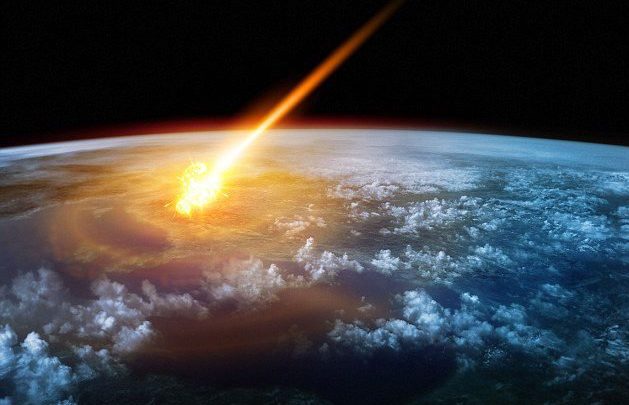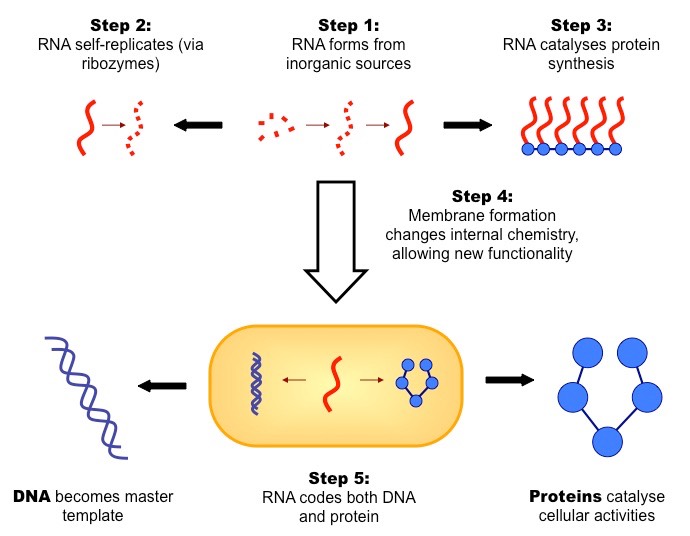How do you think we came to exist? How do you think the universe came to exist? Boom! The Big Bang happened. The universe was created. Earth was formed. An atmosphere, that could sustain life, was given rise to. Organic molecules were synthesized. Certain chemical reactions and metabolic pathways occurred. And slowly life originated.
That is the popular belief on how life came to be here on earth. That’s what you thought too right? However, one should not forget the fact that there are various other unpopular beliefs. The most popular one out of all those unpopular beliefs being, the Theory of Panspermia.
What is panspermia?
The Theory of Panspermia suggests that life itself did not originate here on earth, but was brought here from outer space, possibly by a meteorite. It also presents the idea that life is present throughout the universe. And celestial bodies such as comets, asteroids, meteoroids, and space dust disperse life, all over the universe.
History of panspermia
The idea of ‘seeds of life are present everywhere in the universe’ was first proposed by the Greek philosopher Anaxagoras (500-428 BCE). He also coined the term ‘panspermia’ to describe the concept of life traveling between planets as seeds. Other Greek philosophers, such as Anaximander and Thales, also mentioned philosophical aspects of panspermia theory.
In the 20th century, Swedish Chemist Svante Arrhenius postulated that microscopic spores are carried through interplanetary space by means of radiation pressure from the sun. More recently, prominent scientists like Sir Fred Hoyle and Professor Chandra Wickramasinghe, the latter being a Sri Lankan-born astronomer, have thoroughly spoken in favor of the theory.
Fred Hoyle and Chandra Wickramasinghe
Why it is captivating?
Evidence suggesting that the theory of panspermia could in fact be true makes it so captivating.
Seemingly, microbial growth on earth can be observed at temperatures as high as 113°C and as low as -18°C. And many microbes can be preserved in liquid nitrogen at -196°C. They can withstand extreme pressure, high amounts of ionizing and UV radiation too. These findings make it difficult to interpret the most suitable conditions for life, suggesting that life may exist elsewhere in the universe as well.
Another fact is that organic matter, the matter made of compounds that contain Carbon, is relatively common in space. In 1974, Sir Fred Hoyle and Prof. Chandra Wickramasinghe came up with the hypothesis that some dust in interstellar space was mostly organic. This was later proven to be correct. Additionally, it has also been discovered that interplanetary dust from comets and asteroids, when bombarded by the solar wind, can release oxygen, which is a major element in organic matter. And amino acids, which are the building blocks of proteins, have also been identified in meteorites that have landed on earth. These events suggest that life on our planet may have come from outer space.
Furthermore, studies on fossilized bacterial spores indicate that they can remain viable for up to 250 million years. Thus, they could potentially account for life on earth, acting as ‘seeds of life’, to which the Greek philosopher Anaxagoras referred in the earliest of times.
Why it is contentious?
Panspermia theory has often sparked controversy due to the fact that it does not answer the question of the ‘origin of life’. It does not really concentrate on how life began, but on various methods that may distribute it in the universe.
Moreover, strong evidence in favor of the ‘RNA World Hypothesis’, has led to the rejection of panspermia theory. The RNA world is the hypothesis that says life on Earth began with an RNA molecule that could copy by itself. Scientists believe that RNA nucleotides emerged in a chaotic soup of molecules on early Earth, rather than coming from outer space.
The theory of Panspermia was also censured because it was thought that it could not be tested experimentally. Experiments leading to discoveries of microorganisms in space have nevertheless polarized the scientific community on many occasions.
Conclusion
Science is not static, but dynamic. It is ever-changing. Concepts like the geocentric model of the universe, the theory of spontaneous generation, the flat-earth model were once hailed and widely accepted to be true. But advancements in science have gradually debunked them. Hence, we can assume that the theories we learn as facts today have a chance of getting modified or even replaced completely tomorrow.
So it is unwise to discard the panspermia theory without gathering solid proofs against it. There could be certain experiments that may yield results in favor of the theory but are unable to be conducted using the current technology. As the authenticity of the Big Bang theory has already been questioned with certain discoveries like the existence of galaxies with substantial age differences, one cannot reject the thought of a major scientific revolution in the future that will debunk the currently accepted Big Bang Theory and establish the acceptance of a theory like panspermia.
And not to forget the fact that the origin of SARS-CoV-2, the virus responsible for the Covid-19 pandemic, has been interestingly linked to a meteor crash that was spotted over the city of Songyuan in North-East China on October 11, 2019. Researchers propose that the meteorite may have been carrying pathogenic microorganisms.
As they say, that time heals all wounds, only time holds the key to the answers to all these questions. Perhaps humankind’s constant attempt for the search of extraterrestrial life may provide us with great enlightenment with regards to our origin. But as for now, the question still remains whether the inception of life here on earth was heavily influenced by extraterrestrial phenomena.
Image Courtesy:
- Featured Image: https://go.nasa.gov/3agp7cK
- Image 01: https://bit.ly/3skV6Pl
- Image 02: https://bit.ly/2Q3evqM
- Image 03: https://bit.ly/3dmc7V0
References:
- Space and Eternal Life: A Dialoge Between Chandra Wickramasinghe And Daisaku Ikeda – A book by Daisaku Ikeda & Chandra Wickramasinghe
- https://manyworlds.space/2017/06/23/in-search-of-panspermia/
- https://helix.northwestern.edu/article/origin-life-panspermia-theory
- https://ui.adsabs.harvard.edu/abs/2019asbi.book..419K/abstract
- https://www.khanacademy.org/science/ap-biology/natural-selection/origins-of-life-on-earth/a/rna-world#:~:text=The%20RNA%20world%20hypothesis%20suggests,central%20to%20life%20on%20Earth
- https://www.megainteresting.com/pictures/gallery/the-theory-of-panspermia-or-the-cosmic-origin-of-life-211584626663/8
- https://www.discovermagazine.com/health/the-strange-theory-of-coronavirus-from-space




